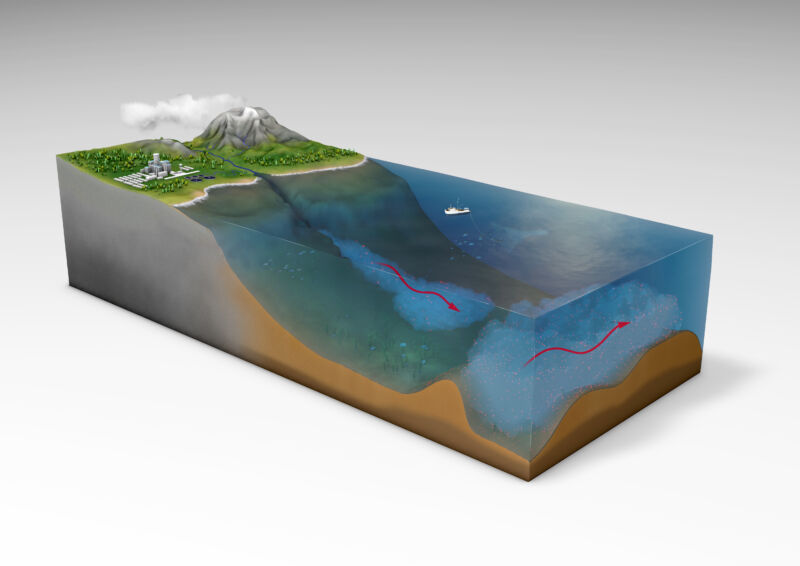We’re making garbage patches on the ocean floor, too

Enlarge / Microplastics are transported in the deep sea by turbidity currents and bottom currents, which concentrate them in hotspots known as sediment drifts. (credit: I. Kane et al. (2020))
Every year, millions of tonnes of plastic enter the oceans. If they're buoyant, they get swept by surface currents into massive garbage patches" like the famous ones in the North Pacific Ocean. But the tiny fragments and fibers of microplastics are harder to trace. As researchers have built up more evidence of their distribution, it's becoming clearer that they may have a tendency to accumulate in particularly unfortunate places, like the surface currents where prey is plentiful and juvenile fish do a lot of feeding.
A paper in Science today reports a new hotspot: regions of the seafloor where sediments, swept along by deep currents, accumulate. Those same currents transport oxygen and nutrients to deep-sea ecosystems, meaning that the microplastics are probably accumulating in some of the most biodiverse spots of the seafloor.
Buried plasticMuch like weather on land, ocean currents are a morass of complex, interconnected systems, affected by local physical features. This makes it difficult to understand where plastics might end up. But we do know there's a lot to track. Right now, only around one percent of the plastic in the oceans seems to accumulate on the surface; much of the rest probably settles in the depths.
Read 9 remaining paragraphs | Comments